The Potting Shed: How a Photographer's Love of Slow Storytelling Transformed a Salvaged Barn into a Flower Garden Sanctuary
Jane Peet's flower house is where vintage finds, perennial blooms, and the art of intentional living come together – here's how to capture the same timeless beauty
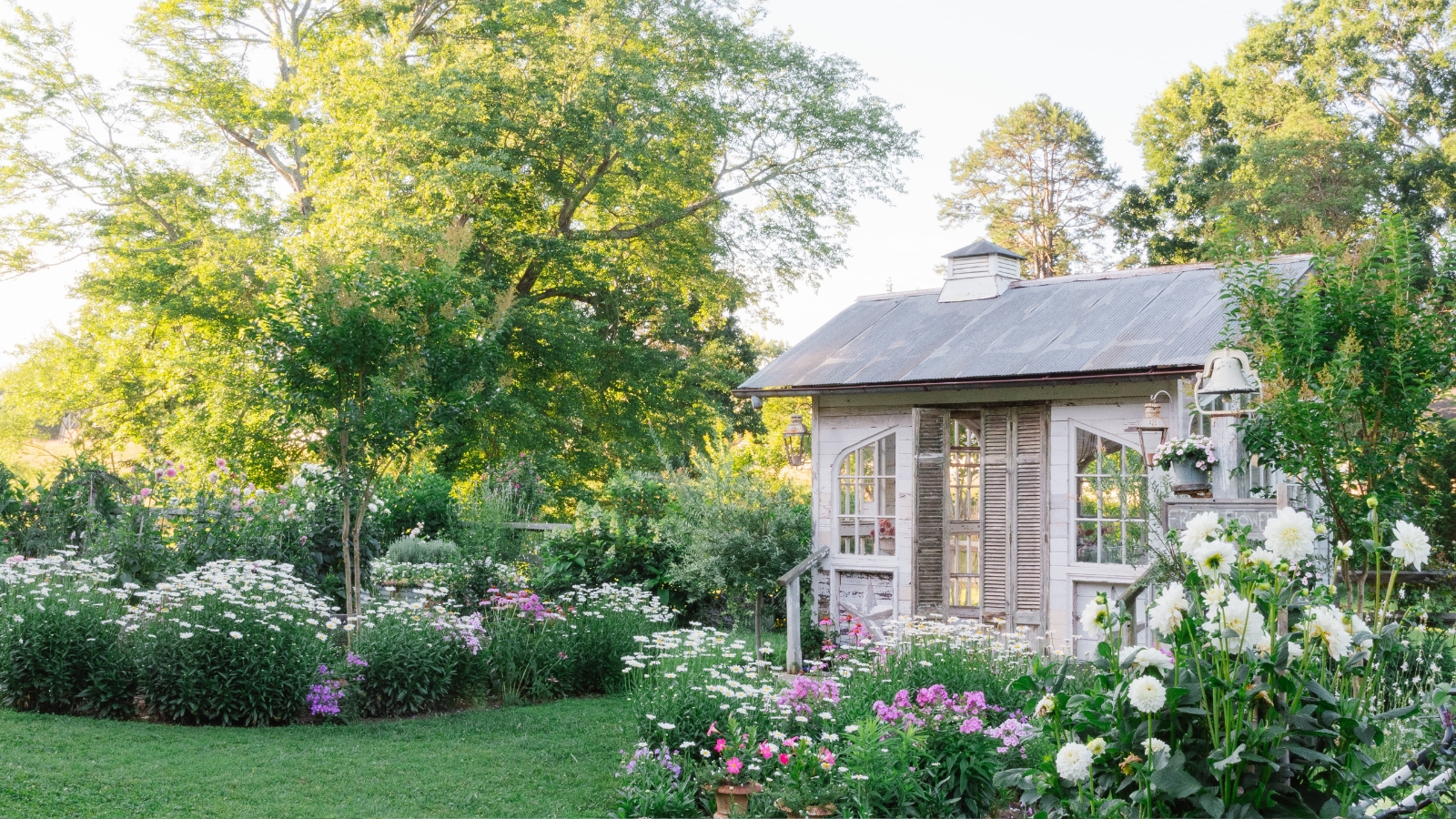
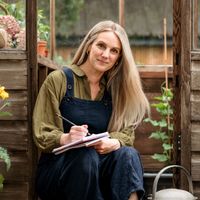
Her garden may have started with three raised cutting beds, but for North Carolina-based photographer and flower gardener Jane Peet, this has evolved into something far more profound. Her flower house – a small sanctuary built entirely from salvaged materials – stands at the heart of a sprawling southern garden, and is where the philosophy of slow, intentional living shapes every creative decision.
'We started with three raised beds of zinnias and very soon we were hooked,' says Jane. Her garden has grown to contain more than 500 peonies and deep beds where a plethora of perennials grow. But this evolution wasn't about creating a flower farm or a cutting garden for profit. Instead, Jane realized something unexpected: 'I thought I wanted a flower farm, but what I really wanted was a flower garden.'
This distinction is at the heart of everything Jane creates. Where many might see flowers as crops to harvest, she sees a living canvas. 'The garden is my bouquet now,' she explains. 'You go out there and the birds and the bumblebees and the bees – we have two hives – and you just start seeing all of this. You really realize how calming the garden is.'
A space built from salvaged stories
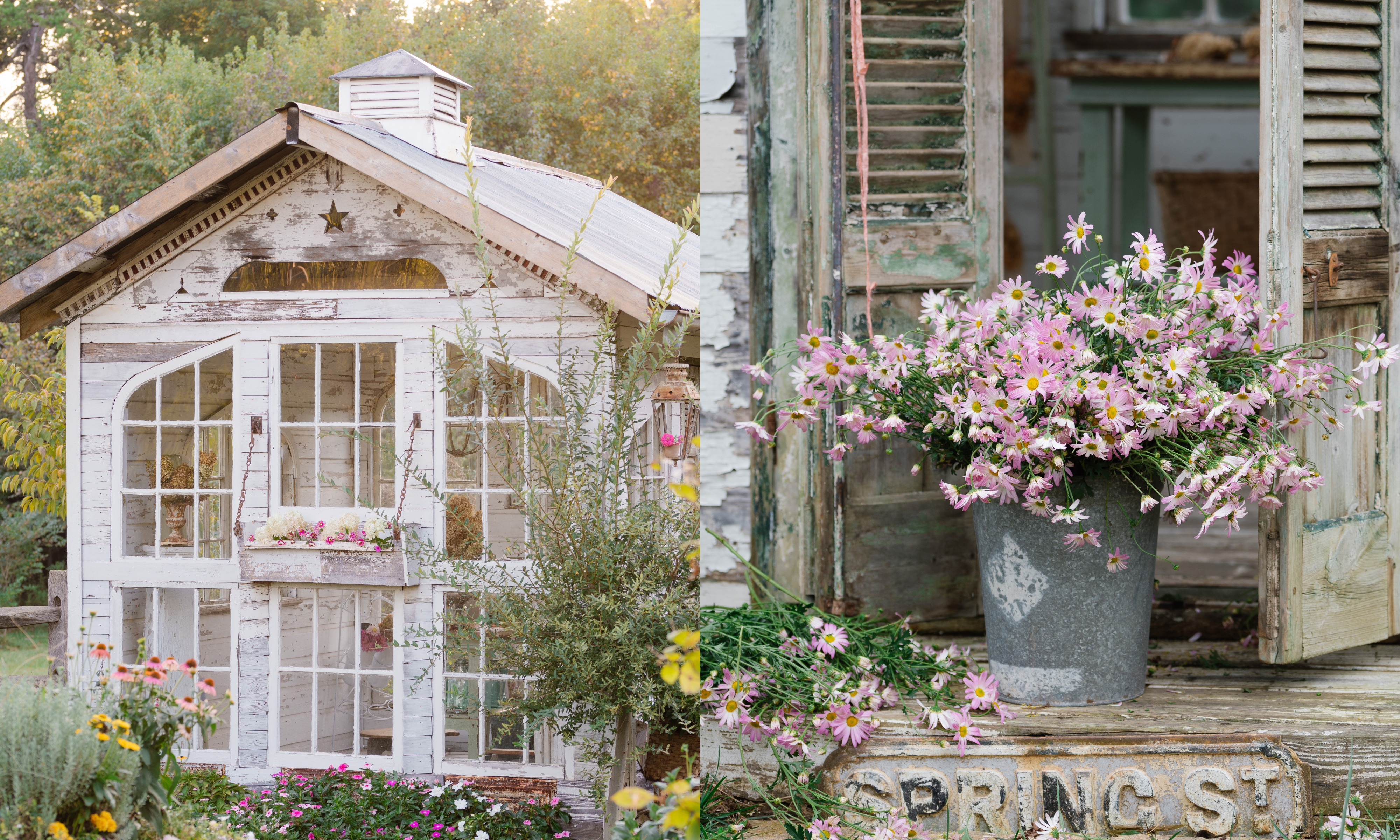
The flower house itself, a vintage garden room idea, is a testament to Jane and her husband's creative approach to building. Constructed entirely from reclaimed materials, the small structure is anchored by stunning antique French shutter doors that nearly didn't make it into the final design.
'We had bought these antique French shutter doors, and my husband said we're not going to be able to use them because they're just too high,' Jane recalls. 'But what we loved them, so we just built around the doors. Our love of antiques comes first.'
Much of the salvaged wood and architectural elements came from a nearby Historic Society – a regional treasure trove where materials from demolished historic homes find new life.
'When they tear down old homes, instead of all of that being thrown away, it goes to the Historic Society and you can shop,' explains Jane. The white-painted interior walls, now weathered to a beautiful patina, are a prime example. 'They're original. They weren't painted – they're probably 100 years old,' she says.
The couple's commitment to using reclaimed materials extends throughout their property. 'My husband has torn down barns for the wood,' Jane notes. Even the farm fence wrapping the garden came from Facebook Marketplace. 'Someone was taking it down to put up a white fence, and this is already old and has the moss and all of that we're looking for and the character.'
A photographer's approach to garden design
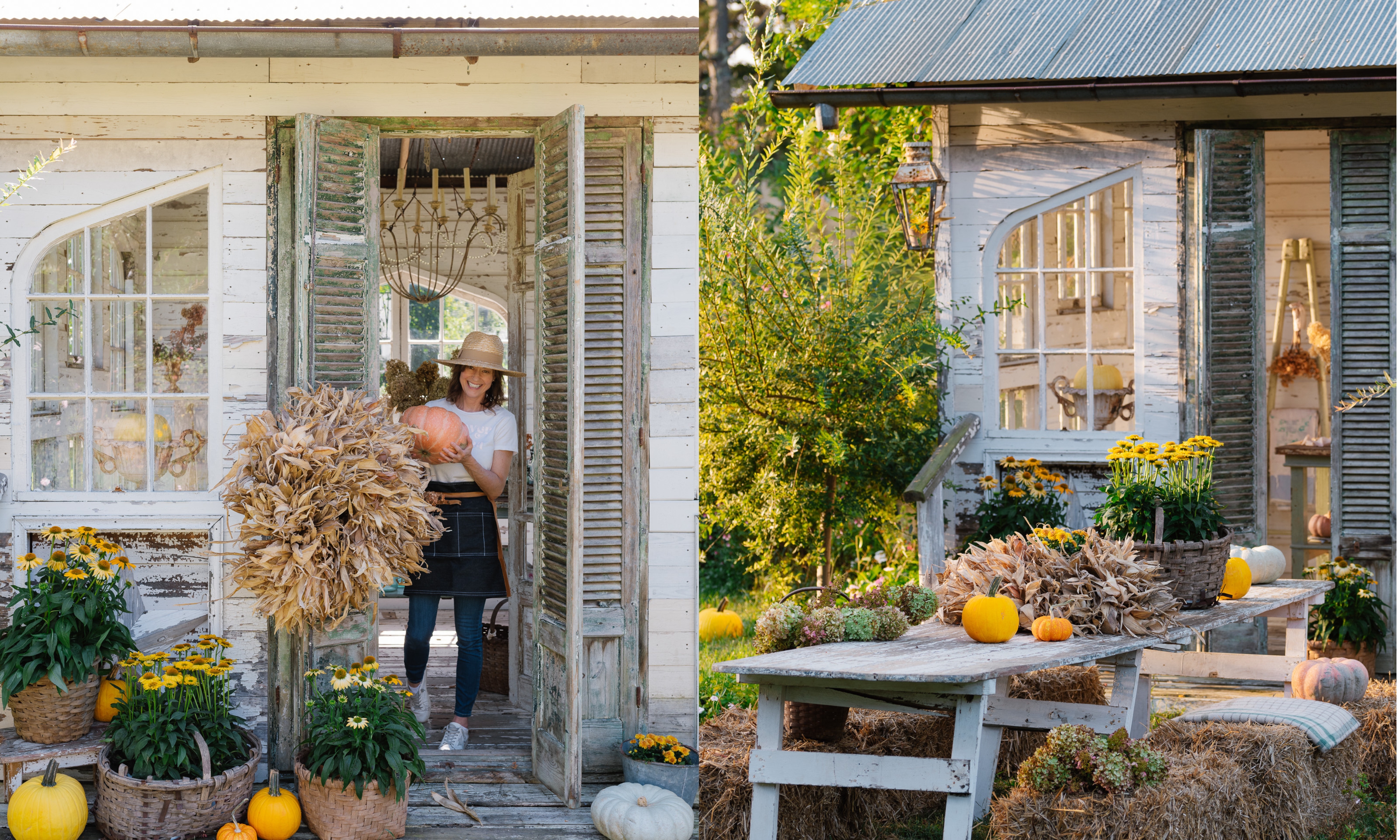
What makes Jane's flower house truly unique is how it functions as both a working garden space and a photography studio. The small structure can't accommodate everything at once, so she moves things seasonally, curating the space as carefully as she would a still life.
'I definitely have to keep it seasonal' she explains. 'I can't have everything in there. Some tools and gardening kit are stored in the barn or in our silos.' Antique baskets might feature heavily in fall for their texture and harvest aesthetic, then move aside for collections of weathered clay pots or French stoneware jars in spring.
This constant curation reflects what Jane calls her 'messy studio' aesthetic. 'As much as it is styled, I'm never trying to sweep everything up,' she says. 'I like that behind-the-scenes feel – like you were a florist and you would still see the messiness of creating the bouquets. It really feels real versus me going in and sweeping everything up.'
Vintage vessels and cutter quilts
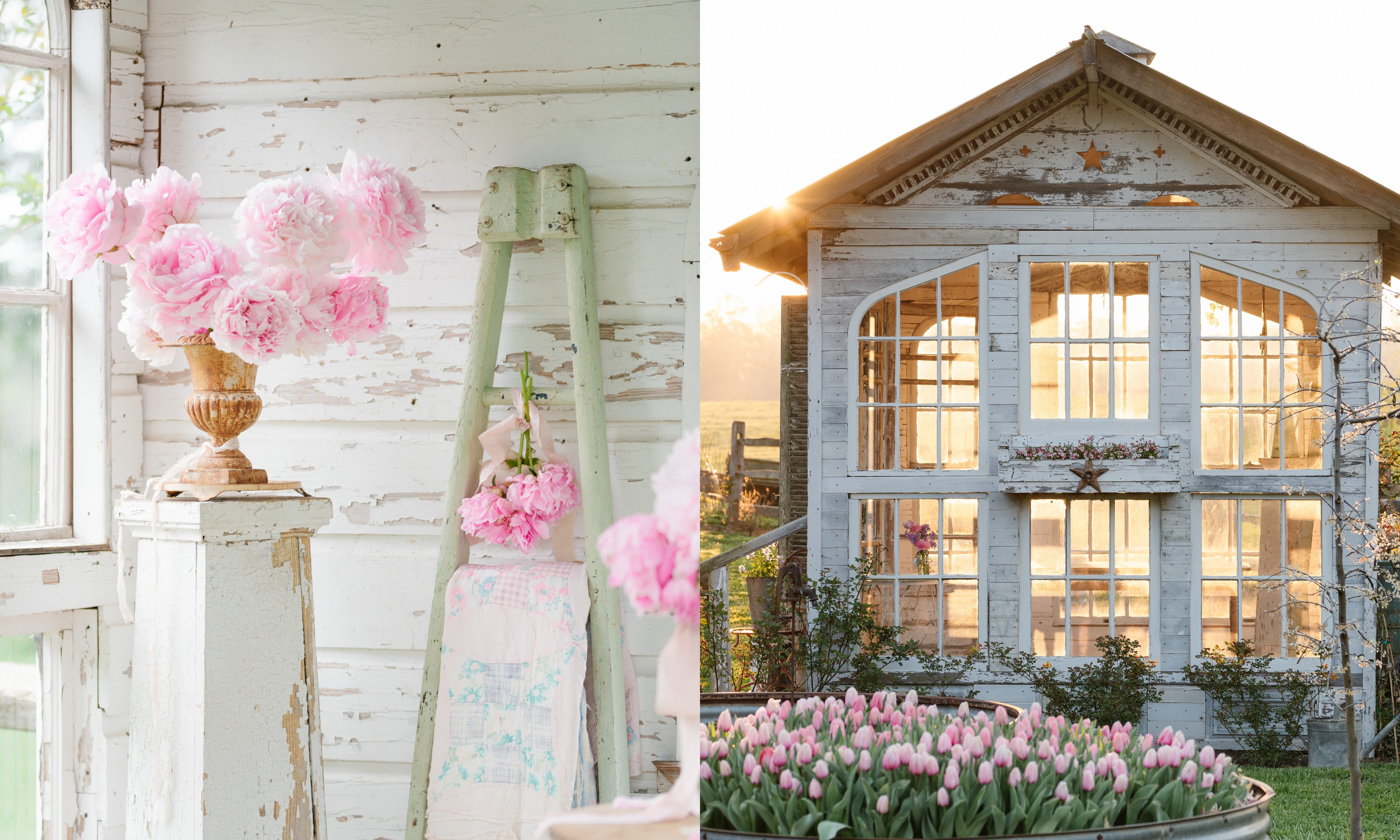
For someone with Jane's background – she sold antiques for years – the styling of the flower house naturally gravitates toward pieces with history and patina. Her collection of vessels runs from French stoneware to industrial pieces, weathered clay pots to chipped containers.
'If it looks weathered or it's got chippy paint on it, I like it' she says. One unexpected element she's known for is styling with vintage cutter quilts. 'I love collecting old quilts,' Jane explains. 'The thing about old cutter quilts is you can find them $25 or $30. They're stained and ripped, but for me with photography it's totally fine because I'm going to lay them over a hay bale or in the ladders in the flower house.'
This approach to styling – embracing imperfection and patina – means almost nothing in her creative space is new. 'I can't even think of something that wouldn't be vintage or antique, besides my garden tools,' she laughs. 'Everything I photograph is pretty much vintage or antique.'
Even within her collection, certain pieces become constants. 'I've photographed the flower house with my little ladder in there for several years now,' she says. 'I'm a creature of habit. It feels like me.'
Shop this space
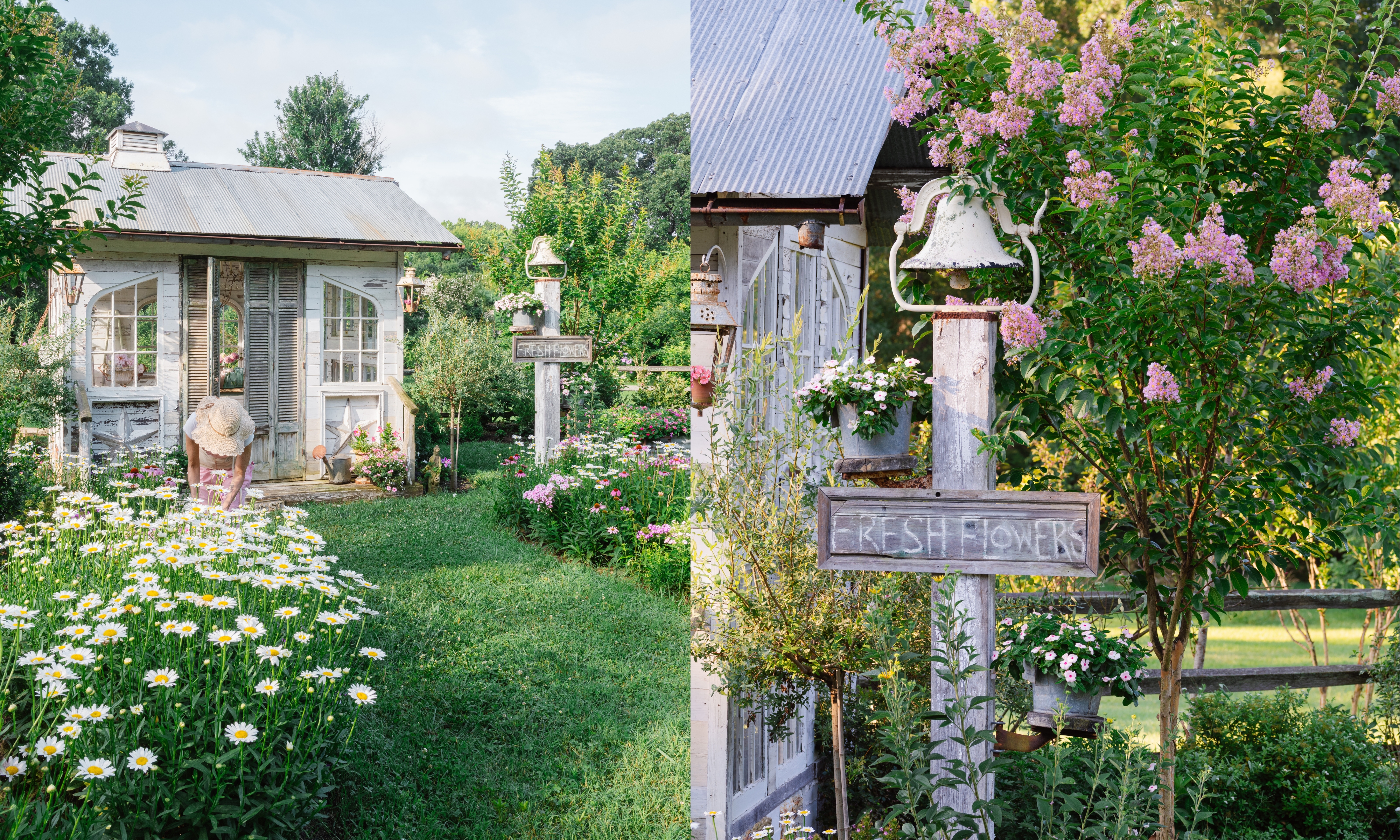
Jane's aesthetic is rooted in vintage finds and salvaged materials, but you can capture the same timeless, lived-in beauty by mixing carefully chosen new pieces with antique treasures.
It may be a good idea to research into the best places to shop antique and vintage if you want to recreate a similar look and feel by decorating with antiques.
Here are some pieces that would feel right at home in a flower house or garden room inspired by slow storytelling and natural patina.
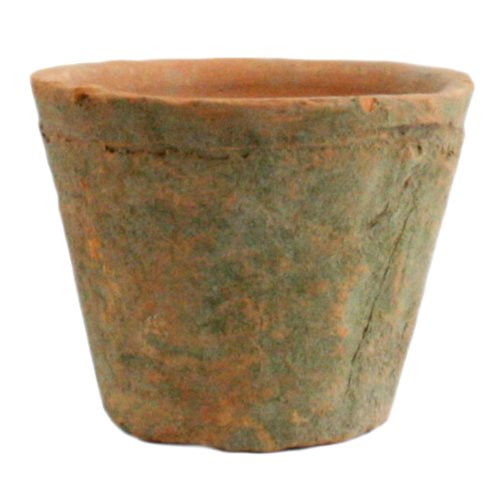
Weathered terracotta is essential for achieving that time-worn aesthetic Jane loves. This aged clay pot would be perfect for staging on vintage benches or filling with perennials.
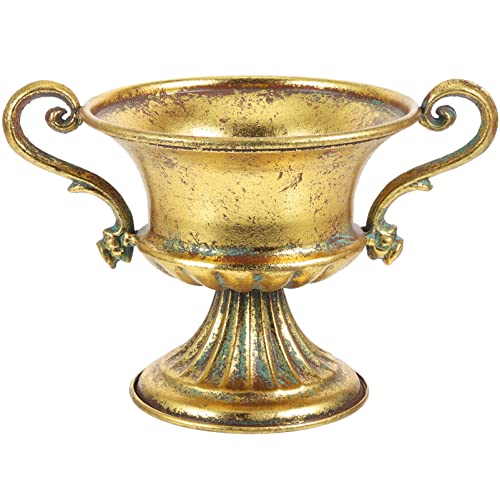
Distressed-looking vessels in antique brass will bring an instant charm to your garden space, and will do a lot to elevate your floral arrangements.
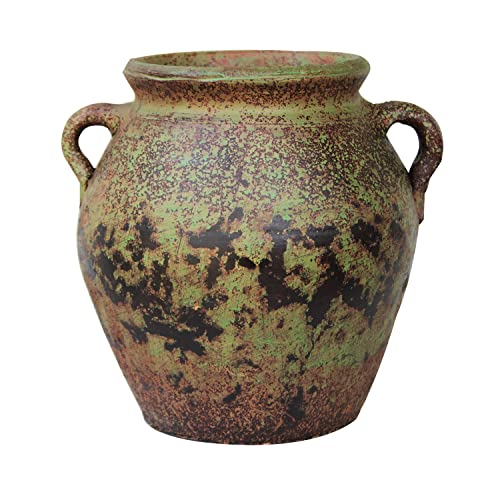
Jane's collection of jars and vessels is integral to her styling. This stoneware vase captures that same artisanal quality and would be perfect for holding garden tools or displaying cut stems.
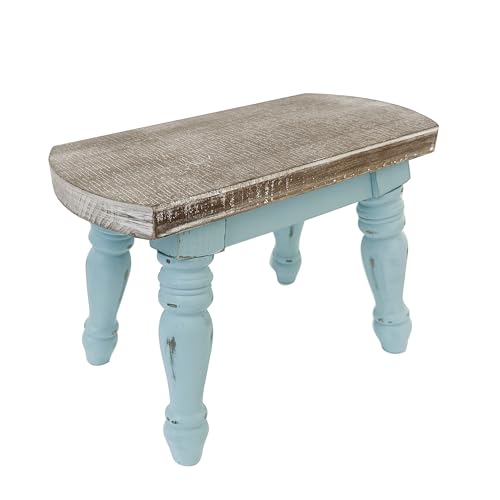
A decorative step stool or ladder is one of those pieces that becomes part of the space's character. Use it to display cutter quilts, hang dried flowers, or drape vintage linens.
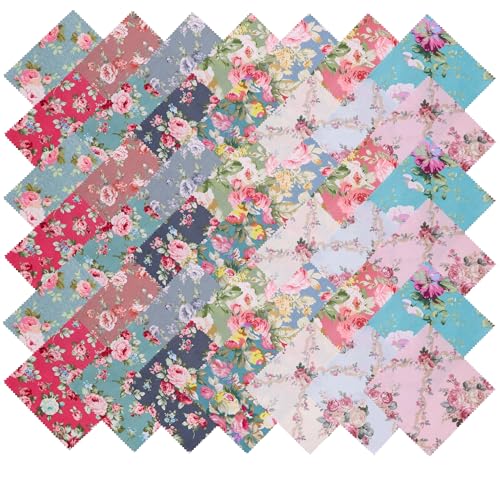
Take inspiration from Jane's love of cutter quilts. These vintage quilt pieces are affordable and perfect for styling over hay bales, draping on ladders, or adding texture to your seasonal displays.
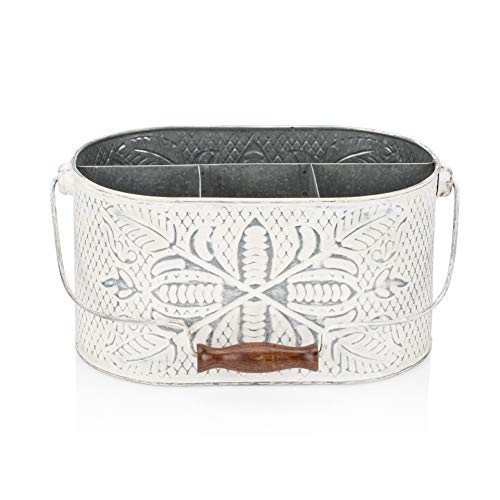
The charming weathered on this caddy is exactly what Jane looks for in her pieces. Use it to corral hand tools, seed packets, or small vessels for an effortlessly styled look.
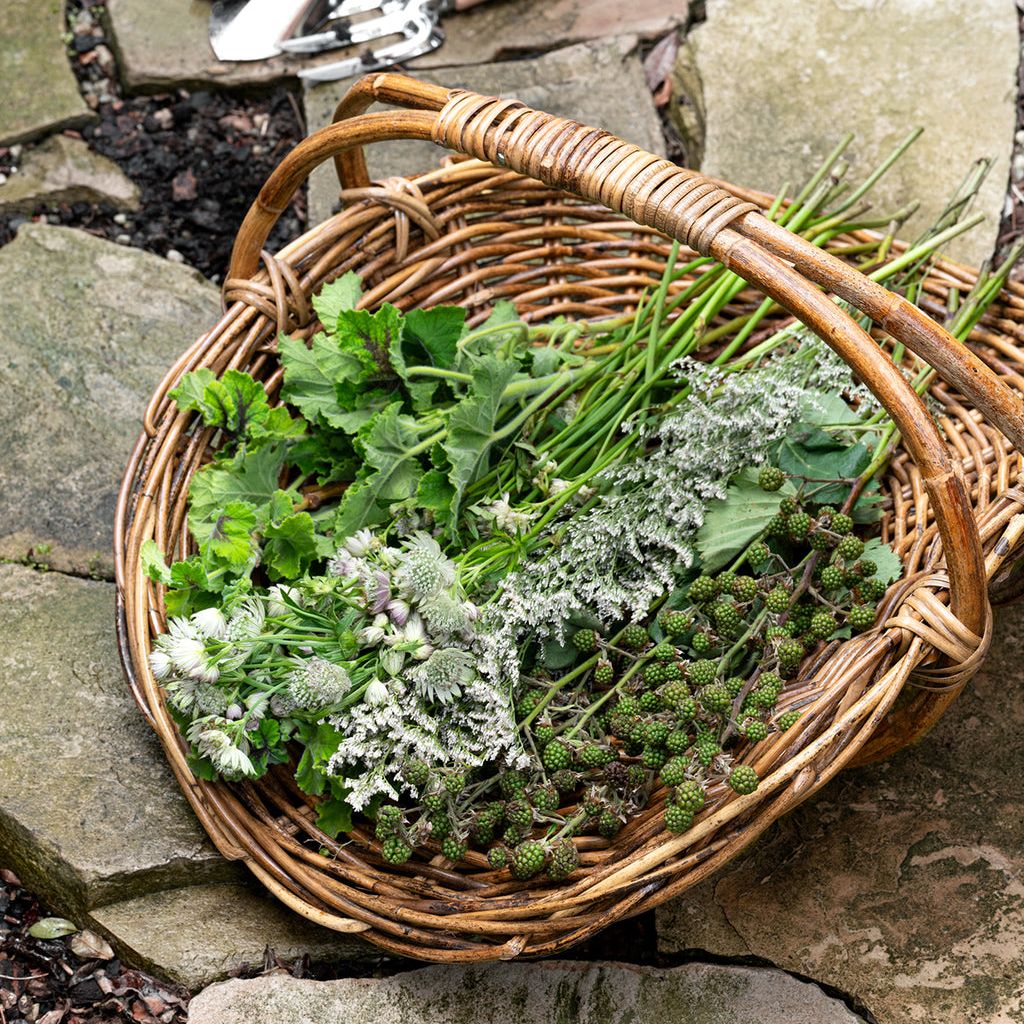
Nothing says vintage appeal quite like a wicker trug, especially in fall. For me, this is a must-have accessory. When not using it to gather your cut flowers, hang it from the ceiling and adorn with dried flower stems.
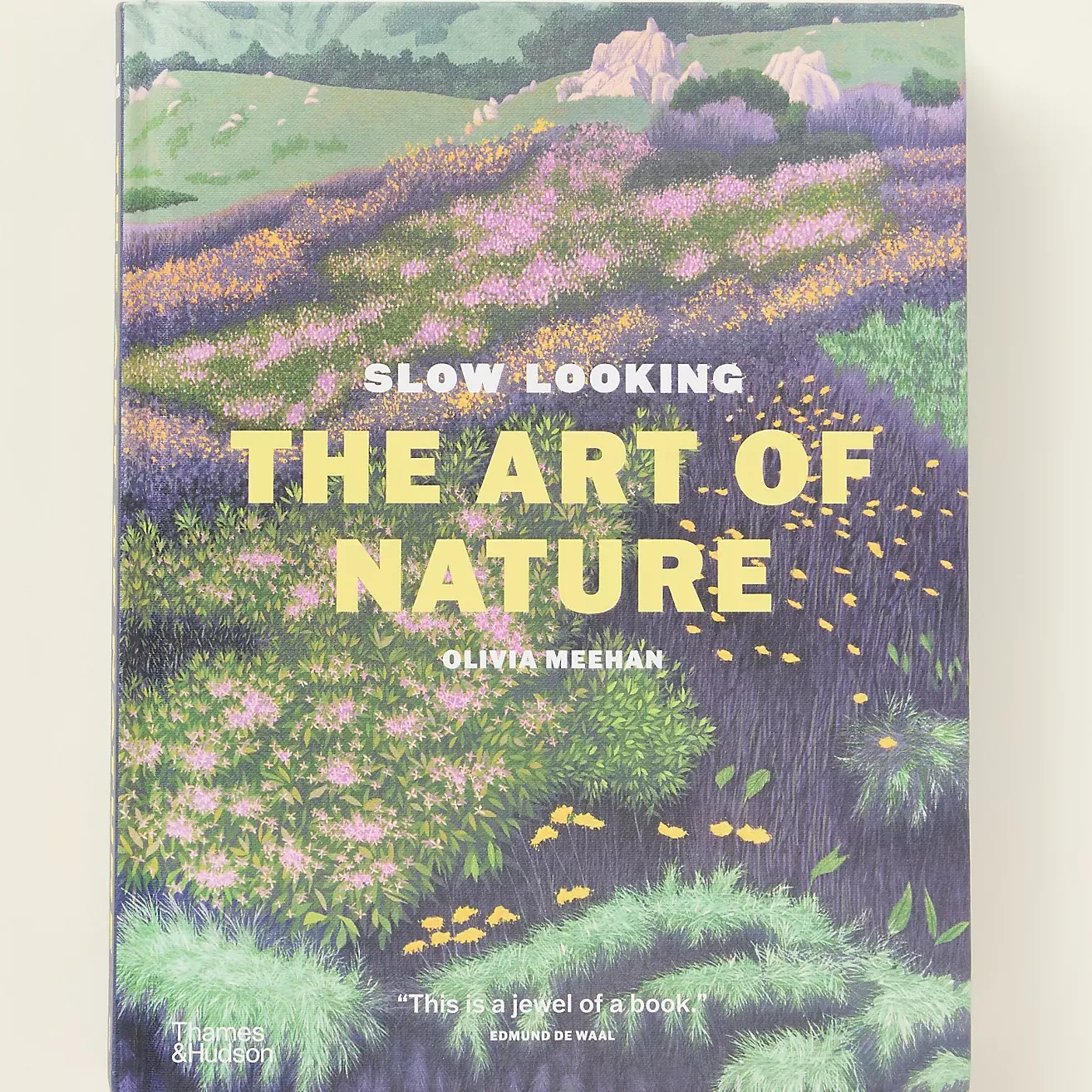
Be inspired by this astounding visual compendium of artworks reflecting our connection with the natural world and artistic expression.
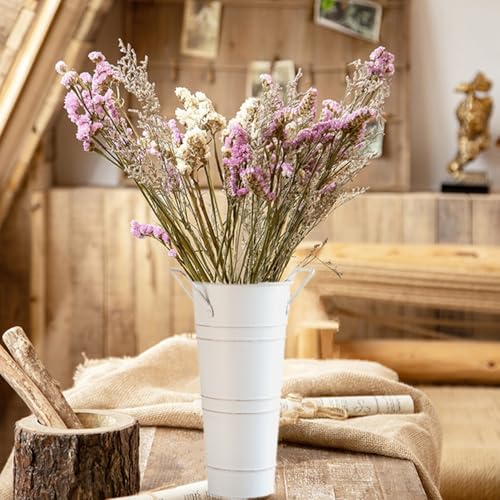
When you grow flowers, you always want to be able to display them in the best possible way, especially if photography is your craft. These buckets are ideal for the job.
Jane's flower house proves that the most beautiful garden spaces aren't about perfection or profit – they're about creating a sanctuary where creativity, nature, and intentional living intersect.
Through salvaged materials, vintage treasures, and a commitment to slow storytelling, she's built something far more valuable than a cutting garden: a living canvas that brings joy with every season.
The Potting Shed is a new series that steps inside the sheds and greenhouses of designers and gardeners to uncover the practical tools and stylish essentials they use every day. We reveal how these spaces are organized, what products they rely on, and how small details – from favorite pots and vintage finds to seasonal gear – help shape their gardening routines.
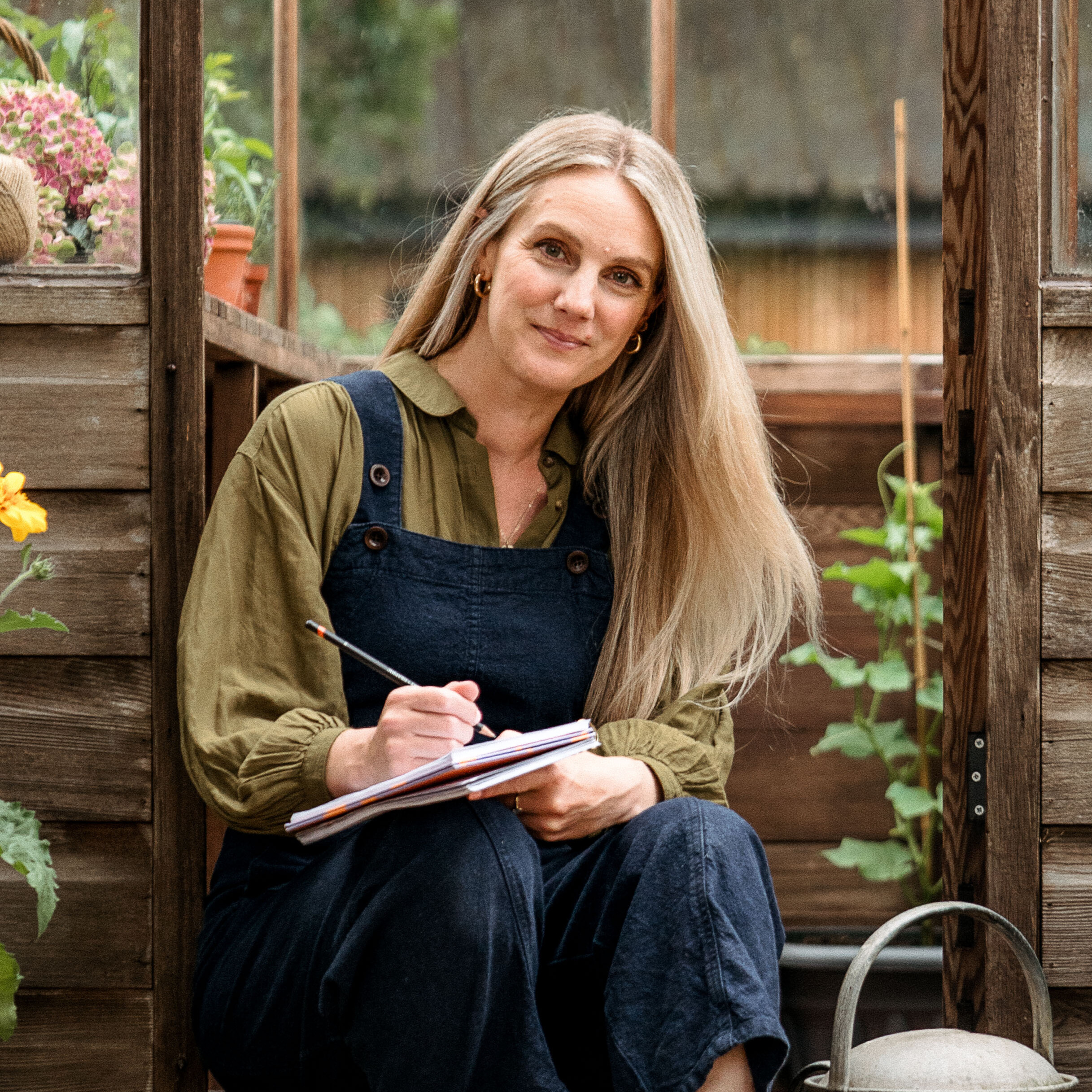
Rachel is a gardening editor, floral designer, flower grower and gardener. Her journalism career began on Country Living magazine, sparking a love of container gardening and wild planting. After several years as editor of floral art magazine The Flower Arranger, Rachel became a floral designer and stylist, before joining Homes & Gardens in 2023. She writes and presents the brand's weekly gardening and floristry social series Petals & Roots. An expert in cut flowers, she is particularly interested in sustainable gardening methods and growing flowers and herbs for wellbeing. Last summer, she was invited to Singapore to learn about the nation state's ambitious plan to create a city in nature, discovering a world of tropical planting and visionary urban horticulture.
You must confirm your public display name before commenting
Please logout and then login again, you will then be prompted to enter your display name.